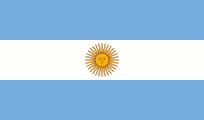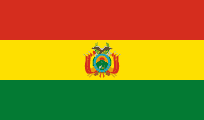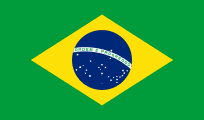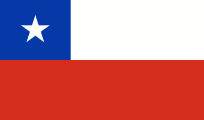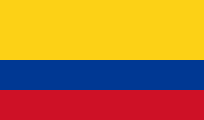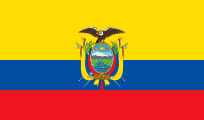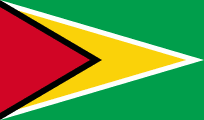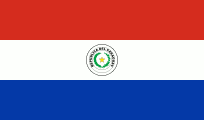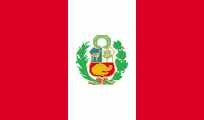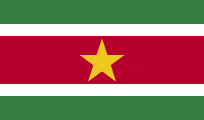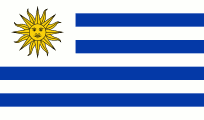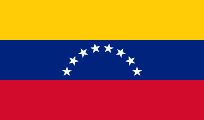Difference between revisions of "Civilisation/World Geography - South America"
(Added flags and information tables) |
(Added flags and information tables) |
||
| Line 447: | Line 447: | ||
Mount Asphyxia forms the summit of Zavodovski Island, northernmost of the South Sandwich Islands | Mount Asphyxia forms the summit of Zavodovski Island, northernmost of the South Sandwich Islands | ||
| − | + | <u><br />Various</u> | |
| − | |||
World’s most powerful hydroelectric dam – Itaipu, on the border of Brazil and Paraguay, on the Rio Parana, the second longest river in South America. Gravity dam, completed in 1982 | World’s most powerful hydroelectric dam – Itaipu, on the border of Brazil and Paraguay, on the Rio Parana, the second longest river in South America. Gravity dam, completed in 1982 | ||
| − | + | Lake Titicaca is the highest commercially navigable lake in the world, at 3,812 m above sea level. Located in the Altiplano high in the Andes on the border of Peru and Bolivia, Titicaca has a maximum depth of 281 m. The western part of the lake belongs to the Puno Region of Peru, and the eastern side is located in the Bolivian La Paz Department | |
| − | |||
| − | |||
| − | |||
| − | Lake Titicaca is the highest commercially navigable lake in the world, at | ||
| − | Iguazu Falls | + | Iguazu Falls are located on the border of the Brazilian state of Parana and the Argentine province of Misiones. The falls divide the river into the upper and lower Iguazu. The waterfall system consists of 275 falls, including The Devil’s Throat |
| − | |||
| − | |||
| − | |||
| − | |||
| − | |||
| − | |||
| − | |||
| − | |||
Gran Chaco – a sparsely populated, hot and semi-arid lowland region of the Río de la Plata basin, divided among eastern Bolivia, Paraguay, northern Argentina and a portion of the Brazilian states of Mato Grosso and Mato Grosso do Sul, where it is connected with the Pantanal region | Gran Chaco – a sparsely populated, hot and semi-arid lowland region of the Río de la Plata basin, divided among eastern Bolivia, Paraguay, northern Argentina and a portion of the Brazilian states of Mato Grosso and Mato Grosso do Sul, where it is connected with the Pantanal region | ||
| − | + | Triple Frontier – Brazil, Argentina and Paraguay. Iguazu and Parana converge | |
| − | + | Tres Frontera – Brazil, Peru and Columbia. Upper Amazon | |
| − | |||
| − | |||
| − | |||
Amazon River is the largest river by discharge of water in the world. The Amazon basin is the largest drainage basin in the world. Flows for 4,000 miles through Brazil, Colombia and Peru | Amazon River is the largest river by discharge of water in the world. The Amazon basin is the largest drainage basin in the world. Flows for 4,000 miles through Brazil, Colombia and Peru | ||
| Line 486: | Line 470: | ||
Parana River runs through Brazil, Paraguay and Argentina | Parana River runs through Brazil, Paraguay and Argentina | ||
| − | |||
| − | |||
Longest rivers in South America – Amazon, Parana, Madeira, Purus, Sao Francisco | Longest rivers in South America – Amazon, Parana, Madeira, Purus, Sao Francisco | ||
| − | + | Andes is the longest continental mountain range in the world, stretching for 4,300 miles through Venezuela, Colombia, Ecuador, Peru, Bolivia, Chile, and Argentina. The Altiplano plateau is the worlds second-highest following the Tibetan plateau | |
| − | |||
| − | |||
| − | |||
| − | |||
| − | Andes is the longest continental mountain range in the world, stretching for 4,300 miles through Venezuela, Colombia, Ecuador, Peru, Bolivia, Chile, and Argentina. The Altiplano plateau is the | ||
Parinacota, a composite volcano, is located on the Chilean / Bolivian frontier and is one of two volcanoes that make up the Nevados Payachata range. The other older volcano, Pomerape, is located to the northeast of Parinacota and makes up the northern part of this volcanic range | Parinacota, a composite volcano, is located on the Chilean / Bolivian frontier and is one of two volcanoes that make up the Nevados Payachata range. The other older volcano, Pomerape, is located to the northeast of Parinacota and makes up the northern part of this volcanic range | ||
Mount Roraima includes the triple border point of Venezuela, Brazil and Guyana | Mount Roraima includes the triple border point of Venezuela, Brazil and Guyana | ||
| − | |||
| − | |||
| − | |||
| − | |||
Highest mountains in South America – Aconcagua, Ojos del Salado, Monte Pissis | Highest mountains in South America – Aconcagua, Ojos del Salado, Monte Pissis | ||
| − | |||
| − | |||
| − | |||
| − | |||
| − | |||
| − | |||
| − | |||
Drake Passage is the body of water between the southern tip of South America at Cape Horn, Chile and the South Shetland Islands of Antarctica | Drake Passage is the body of water between the southern tip of South America at Cape Horn, Chile and the South Shetland Islands of Antarctica | ||
Beagle Channel is a strait separating islands of the Tierra del Fuego Archipelago. The Beagle Channel, the Straits of Magellan to the north, and the open ocean Drake Passage to the south are the three navigable passages around South America between the Pacific and the Atlantic oceans. Most commercial shipping is through the Drake Passage | Beagle Channel is a strait separating islands of the Tierra del Fuego Archipelago. The Beagle Channel, the Straits of Magellan to the north, and the open ocean Drake Passage to the south are the three navigable passages around South America between the Pacific and the Atlantic oceans. Most commercial shipping is through the Drake Passage | ||
| − | |||
| − | |||
| − | |||
| − | |||
| − | |||
| − | |||
| − | |||
| − | |||
| − | |||
| − | |||
| − | |||
| − | |||
| − | |||
| − | |||
Revision as of 13:25, 22 June 2021
Argentina
Flag of Argentina was created by Manuel Belgrano in 1812. Features the Sun of May that is a national emblem of Argentina and Uruguay
| Capital | Buenos Aires |
| Largest cities | Buenos Aires, Cordoba, Rosario |
| Currency | Peso |
| Highest point | Aconcagua |
Argentina is the eighth-largest country in the world, the second-largest in Latin America, and the largest Spanish-speaking one. The country has its roots in Spanish colonization of the region beginning in 1512. Argentina rose as the successor state of the Viceroyalty of the Río de la Plata. a Spanish overseas colony founded in 1776
Buenos Aires is served by Ministro Pistarini International Airport
Buenos Aires is known as “Paris of the South”. Spanish seaman Juan Diaz de Solís was the first European to reach the Río de la Plata, in 1516, but his expedition was cut short by an attack in which he was killed by the native Charrúa or Guaraní tribe. The city was first founded as the 'city of Good Air' (old Spanish for 'Fair Winds’) in 1536 by a Spanish gold-seeking expedition under Pedro de Mendoza
Buenos Aires was originally named City of the Holy Trinity and Port of Saint Mary of the Fair Winds
Ushuaia in Tierra del Fuego is the most southerly city in the world
Perito Moreno is a glacier in Patagonia
Aconcagua is the highest mountain (22,800’) outside of the Himalayas, in the province of Mendoza
Mendoza produces 70% of the wine from Argentina
Laguna del Carbon (Spanish: Coal Lagoon) is an endorheic salt lake in Argentina. At 105 metres (344 ft) below sea level, it is the lowest point of both the Western and Southern hemispheres
Straits of Magellan are between Argentina and Tierra del Fuego
Bolivia
| Capital | La Paz (see note below) |
| Largest cities | Santa Cruz, El Alto, La Paz |
| Currency | Boliviano |
| Highest point | Nevado Sajama |
Note: La Paz is the seat of government. Sucre is the constitutional capital
Boliviia is named after Simon Bolívar
Sucre is the constitutional capital of Bolivia
In the late 19th century, an increase in the world price of silver brought Bolivia relative prosperity and political stability. During the early 20th century, tin replaced silver as the country's most important source of wealth
Potosi was the major supply of silver for Spain during the period of the New World Spanish Empire
The US Geological Service estimates that Bolivia has 5.4 million cubic tonnes of lithium which represents 50% – 70% of world reserves
Salar de Uyuni is the world's largest salt flat. It is located in southwest Bolivia
Tiwanaku is an important Pre-Columbian archaeological site in western Bolivia. Tiwanaku is recognized by Andean scholars as one of the most important precursors to the Inca Empire
Brazil
Flag of Brazil features a blue disc with 27 stars and the motto "Ordem e Progresso" (‘Order and Progress’)
| Capital | Brasilia |
| Largest cities | Sao Paulo, Rio de Janeiro, Salvador, Brasilia |
| Currency | Real |
| Highest point | Pico da Neblina |
Brazil is the world's fifth largest country, both by geographical area and by population. It is the largest Portuguese-speaking country in the world. It borders all other South American countries except Ecuador and Chile and occupies 47% of the continent of South America. The country's economy is the seventh largest by GDP. Brazil has been the world's largest producer of coffee for the last 150 years
The name of Brazil is shortened from Terra do Brasil "land of brazilwood"
Rio de Janeiro was the capital of Portugal in the 19th century
Corcovado, meaning ‘hunchback’ in Portuguese, is a mountain in central Rio de Janeiro. It is known worldwide for the 38-meter (125 ft) statue of Jesus atop its peak, entitled ‘Christ the Redeemer’
Sugarloaf Mountain (in Portuguese, Pao de Acucar), is a peak situated in Rio de Janeiro, at the mouth of Guanabara Bay
Ipanema is a district of Rio de Janeiro
Rocinha is the largest favela in Rio and in Brazil
Rio de Janeiro International Airport is named after songwriter Tom Jobim
Petropolis was the official capital of the state of Rio de Janeiro between 1894 and 1903
Tijuca Forest is a mountainous hand-planted rainforest in the city of Rio de Janeiro. It is the world's largest urban forest
President Kubitschek ordered the construction of Brasilia, enacting a long-forgotten article of the country's republican constitutions stating that the capital should be relocated from Rio de Janeiro. Its main urban planner was Lucio Costa. Oscar Niemeyer was the chief architect of most of the public buildings and Roberto Burle Marx was the landscape designer. The city plan was based on the ideas of Le Corbusier. Brasília was built in 41 months, from 1956 to 1960, when it was officially inaugurated
Brasilia is laid out in the form of an airplane
The Cathedral of Brasília in the capital of the Federative Republic of Brazil is an expression of the architect Oscar Niemeyer. This concrete-framed hyperboloid structure, seems with its glass roof to be reaching up, open, to heaven
The Juscelino Kubitschek Bridge, also known as the JK Bridge, crosses Lake Paranoá in Brasília. It is named for Juscelino Kubitschek de Oliveira, former president of Brazil. It was designed by architect Alexandre Chan and structural engineer Mário Vila Verde. Chan won the Gustav Lindenthal Medal for this project
Sao Paulo is the largest city in Southern hemisphere and in Latin America. The name of the city honours Saint Paul of Tarsus
Salvador is the capital of the state of Bahia. Until 1763, Salvador was the capital of Brazil
Fortaleza is the fifth largest city in Brazil
Santos is a coffee-exporting port
Manaus is the largest city along the Amazon River
Opera house in Manaus was built in 1896
Londrina is a city in Parana state
Natal is the capital city of Rio Grande do Norte, a northeastern state in Brazil. It was founded on 25 December 1599
Recife is a major port on the Atlantic Ocean. The name Recife means ‘reef’ in Portuguese
Marajo is an island located at the mouth of the Amazon River. It is the largest island to be completely surrounded by freshwater in the world
Fordlandia is a now-abandoned, prefabricated industrial town established in the Amazon Rainforest in 1928 by American industrialist Henry Ford for the purpose of securing a source of cultivated rubber for the automobile manufacturing operations of the Ford Motor Company
Curitiba is the capital and largest city of Parana
Brazil has largest Japanese population outside of Japan
Pantanal is a natural region encompassing the world's largest tropical wetland area. It is located mostly within the Brazilian state of Mato Grosso do Sul
Sao Francisco is the longest river entirely in Brazil
Brazil has the largest Arabic diaspora
Brazil is the only country on the Tropic of Capricorn and the Equator
Chile
| Capital | Santiago |
| Largest cities | Santiago, Valparaiso, Concepcion |
| Currency | Peso |
| Highest point | Ojos del Salado |
Chile declared its independence from Spain in 1818
Santiago was founded by conquistadors in 1541
Gran Torre Santiago is a 64-story tall skyscraper in Santiago. It is the tallest building in Latin America
Chilean territory includes the Pacific islands of Juan Fernandez, Salas y Gomez, Desventuradas, and Easter Island in Oceania
The Mapocho River flows from the Andes Mountains onto the west and divides Chile's capital Santiago in two
Chile is world’s largest exporter of copper
Casablanca valley is in Chile
Loa is the longest river in Chile
Punta Arenas (English: ‘Sandy Point’) is the capital city of Chile's southernmost region, Magallanes and Antartica Chilena
Puyehue and Cordon Caulle are two coalesced volcanic edifices that form a major mountain massif in Puyehue National Park in the Andes of Ranco Province, Chile. Erupted in 2011
Nevado Ojos del Salaro is a massive stratovolcano in the Andes on the Argentina-Chile border and the highest volcano in the world at 6893 metres. It is also the second highest mountain in the Western Hemisphere and Southern Hemisphere and the highest in Chile
Cape Froward in Chile is the southernmost point in mainland South America
Cape Horn is named after the city of Hoorn in the Netherlands
Colombia
| Capital | Bogota |
| Largest cities | Bogota, Cali, Medellin |
| Currency | US dollar |
| Highest point | Pico Cristobal Colon (see note below) |
Note: Pico Simon Bolivar has almost the same elevation as Pico Cristobal Colon
Colombia is derived from the last name of Christopher Columbus
Bogota has been called "The Athens of South America”
Gold Museum (Spanish: El Museo del Oro) in Bogota displays the largest pre-Hispanic gold work collection in the world
Cali is the second largest city of Colombia
Medellin is the third largest city of Colombia
Punta Gallinas in Colombia is the northernmost point in mainland South America WikiMiniAtlas
Nevado del Ruiz is a stratovolcano in Colombia. Eruptions often cause massive lahars
Pico Cristobal Colon is named after Christopher Columbus
Ecuador
Coat of arms on the flag of Ecuador features a condor over Chimborazo
| Capital | Quito |
| Largest cities | Guayaquil, Quito |
| Currency | US dollar |
| Highest point | Chimborazo |
Ecuador takes its name from Spanish for ‘equator’
At an elevation of 2,800 meters above sea level, Quito is the highest official capital city in the world
Cotapaxi is the world’s highest active volcano
Chimborazo is a currently inactive stratovolcano located in the Andes. With a peak elevation of 6268 m, Chimborazo is the highest mountain in Ecuador. It is the highest peak in close proximity to the equator. While Chimborazo is not the highest mountain by elevation above sea level, its location along the equatorial bulge makes its summit the farthest point on the Earth's surface from the Earth's centre
Galapagos Islands were discovered by the Bishop of Panama. Darwin reached the islands in 1835 in the Beagle. Islands include Espanola (oldest) and Guy Fawkes
Galapagos – formerly known as Columbus Archipelago
Fernandina Island (formerly known in English as Narborough Island) is the third largest, and youngest, island of the Galapagos Islands. The island is an active shield volcano that last erupted in 2005
Isabela Island is the largest island of the Galapagos, nearly four times larger than Santa Cruz, the next largest of the islands. This island was named in honor of Queen Isabella of Spain who sponsored the voyage of Columbus. By the English, it was named Albemarle after the Duke of Albemarle. Shaped like a seahorse
Guyana
Flag of Guyana is known as The Golden Arrowhead
| Capital | Georgetown |
| Largest cities | Georgetown |
| Currency | Dollar |
| Highest point | Mount Roraima |
Guyana was originally colonised by the Netherlands. Later, it became a British colony, known as British Guiana, and remained so for over 200 years until it achieved independence in 1966. In 1970, Guyana officially became a republic
Guyana is a member state of the Commonwealth of Nations and has the distinction of being the only South American nation in which English is the official language. The majority of the population speaks Guyanese Creole
Georgetown was named after George III in 1812
Kaieteur Falls is a waterfall on the Potaro River in Kaieteur National Park
Demerara River is a river in eastern Guyana
Paraguay
Flag of Paraguay differs on its obverse and reverse sides: the obverse shows the national coat of arms, and the reverse shows the seal of the treasury
| Capital | Asuncion |
| Largest cities | Asuncion, Ciudad del Este |
| Currency | Guarani |
| Highest point | Cerro Pero |
Paraguay is sometimes to as the “Heart of America”
Paraguay's indigenous language and culture, Guaraní, remains highly influential
Asuncion is home to nearly a third of Paraguay's population
Atlantic forest is in Paraguay
Peru
| Capital | Lima |
| Largest cities | Lima, Arequipa, Trujillo |
| Currency | Sol |
| Highest point | Huascaran |
Peru was home to the Inca Empire, the largest state in Pre-Columbian America. The main spoken language is Spanish, although a significant number of Peruvians speak Quechua
Lima airport named after Jorge Chavez, the first person to fly across the Alps
Cuzco is a city in southeastern Peru, near the Urubamba Valley (Sacred Valley) of the Andes. Cuzco was the capital of Inca Empire
Cuzco is said to have been originally designed in the shape of a jaguar
Machu Picchu is situated on a mountain ridge above the Sacred Valley which is 80 km northwest of Cuzco and through which the Urubamba River flows. Most archaeologists believe that Machu Picchu was built as an estate for the Inca emperor Pachacuti (1438–1472). Often mistakenly referred to as the "Lost City of the Incas”
Arequipa is known as the “white city”. It is the second most industrialized and commercial city of Peru
Moray is a town in Peru approximately 50 km northwest of Cuzco that is noted for a large complex of unusual Inca ruins. These include most notably several enormous terraced circular depressions that were used to study the effects of different climatic conditions on crops
Punta Parinas in Peru is the westernmost point in mainland South America
Yumbilla Falls is considered the world's fifth tallest waterfall
Huascaran is the highest mountain in Peru
Callao is the chief seaport of Peru
Suriname
| Capital | Paramaribo |
| Largest cities | Paramaribo |
| Currency | Dollar |
| Highest point | Julianatop |
Suriname is the smallest sovereign state in South America (French Guiana, while less extensive and populous, is an overseas department of France)
In 1667 Suriname was captured by the Dutch, who governed Suriname as Dutch Guiana until 1954. Gained independence in 1975, but Dutch is still the official language
Most of the population lives on the country's north coast, in and around Paramaribo
Uruguay
Flag of Uruguay features the Sun of May
| Capital | Montevideo |
| Largest cities | Montevideo, Salto |
| Currency | Peso |
| Highest point | Cerro Catedral |
Uruguay is officially the Eastern Republic of Uruguay. It is ranked first in Latin America in democracy, peace, lack of corruption, and quality of living
Uruguay is geographically the second-smallest nation in South America after Suriname
Uruguay is home to 3.3 million people, of whom 1.8 million live in the metropolitan area of its capital and largest city, Montevideo
Montevideo was first found by Juan Diaz De Solis in 1516
Montevideo is served by Carrasco International Airport
Venezuela
An eighth star was added to the flag of Venezuela in 2006
| Capital | Caracas |
| Largest cities | Caracas, Maracaibo, Valencia |
| Currency | Bolivar |
| Highest point | Pico Bolivar |
Venezuela has the world's largest oil reserves
In 1499, an expedition led by Alonso de Ojeda visited the Venezuelan coast. The stilt houses in the area of Lake Maracaibo reminded the navigator, Amerigo Vespucci, of the city of Venice, so he named the region "Veneziola"
River Orinoco flows through Venezuela
Lake Maracaibo is the largest lake in South America
Margarita Island is the largest island in the Venezuelan state of Nueva Esparta, situated in the Caribbean Sea
Pico Humboldt is the second highest peak in Venezuela
Overseas territories
French Guiana
Officially called Guiana. An overseas department and region of France, on the north Atlantic coast of South America. A large part of the department's economy derives from the presence of the Guiana Space Centre, now the European Space Agency's primary launch site near the equator, at Kourou
Devil’s Island is the smallest and northernmost island of the three Iles du Salut located off the coast of French Guiana
Cayenne is the capital city
Falkland Islands
The islands took their English name from Falkland Sound, the channel between the two main islands, which was in turn named after Anthony Cary, 5th Viscount Falkland by Captain John Strong, who landed on the islands in 1690
Mount Pleasant airport serves the Falklands
Port Stanley was renamed Puerto Argentino, briefly, in 1982
Pebble Island is one of the Falkland Islands
Mount Usborne – highest point on Falkland Islands
South Georgia and the South Sandwich Islands
British overseas territory in the southern Atlantic Ocean
Grytviken is the principal settlement of South Georgia
King Edward Point is the capital
Mount Paget on South Georgia is the highest peak in any territory under the sovereignty of the United Kingdom
Mount Asphyxia forms the summit of Zavodovski Island, northernmost of the South Sandwich Islands
Various
World’s most powerful hydroelectric dam – Itaipu, on the border of Brazil and Paraguay, on the Rio Parana, the second longest river in South America. Gravity dam, completed in 1982
Lake Titicaca is the highest commercially navigable lake in the world, at 3,812 m above sea level. Located in the Altiplano high in the Andes on the border of Peru and Bolivia, Titicaca has a maximum depth of 281 m. The western part of the lake belongs to the Puno Region of Peru, and the eastern side is located in the Bolivian La Paz Department
Iguazu Falls are located on the border of the Brazilian state of Parana and the Argentine province of Misiones. The falls divide the river into the upper and lower Iguazu. The waterfall system consists of 275 falls, including The Devil’s Throat
Gran Chaco – a sparsely populated, hot and semi-arid lowland region of the Río de la Plata basin, divided among eastern Bolivia, Paraguay, northern Argentina and a portion of the Brazilian states of Mato Grosso and Mato Grosso do Sul, where it is connected with the Pantanal region
Triple Frontier – Brazil, Argentina and Paraguay. Iguazu and Parana converge
Tres Frontera – Brazil, Peru and Columbia. Upper Amazon
Amazon River is the largest river by discharge of water in the world. The Amazon basin is the largest drainage basin in the world. Flows for 4,000 miles through Brazil, Colombia and Peru
Javary River is a tributary of the Amazon that forms the boundary between Brazil and Peru for more than 500 miles
In its upper stretches, above the confluence of the Rio Negro, the Amazon is called Solimoes in Brazil
Madeira River is one of the biggest tributaries of the Amazon, and flows through Brazil and Bolivia
Parana River runs through Brazil, Paraguay and Argentina
Longest rivers in South America – Amazon, Parana, Madeira, Purus, Sao Francisco
Andes is the longest continental mountain range in the world, stretching for 4,300 miles through Venezuela, Colombia, Ecuador, Peru, Bolivia, Chile, and Argentina. The Altiplano plateau is the worlds second-highest following the Tibetan plateau
Parinacota, a composite volcano, is located on the Chilean / Bolivian frontier and is one of two volcanoes that make up the Nevados Payachata range. The other older volcano, Pomerape, is located to the northeast of Parinacota and makes up the northern part of this volcanic range
Mount Roraima includes the triple border point of Venezuela, Brazil and Guyana
Highest mountains in South America – Aconcagua, Ojos del Salado, Monte Pissis
Drake Passage is the body of water between the southern tip of South America at Cape Horn, Chile and the South Shetland Islands of Antarctica
Beagle Channel is a strait separating islands of the Tierra del Fuego Archipelago. The Beagle Channel, the Straits of Magellan to the north, and the open ocean Drake Passage to the south are the three navigable passages around South America between the Pacific and the Atlantic oceans. Most commercial shipping is through the Drake Passage
